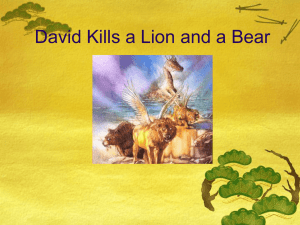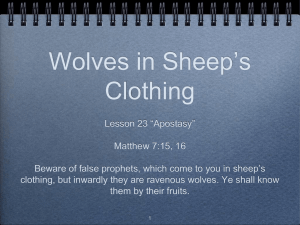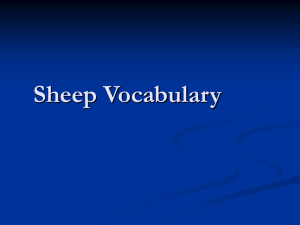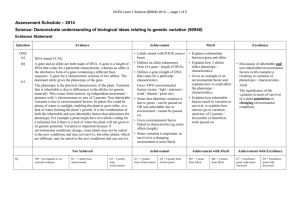SupplementS4
advertisement
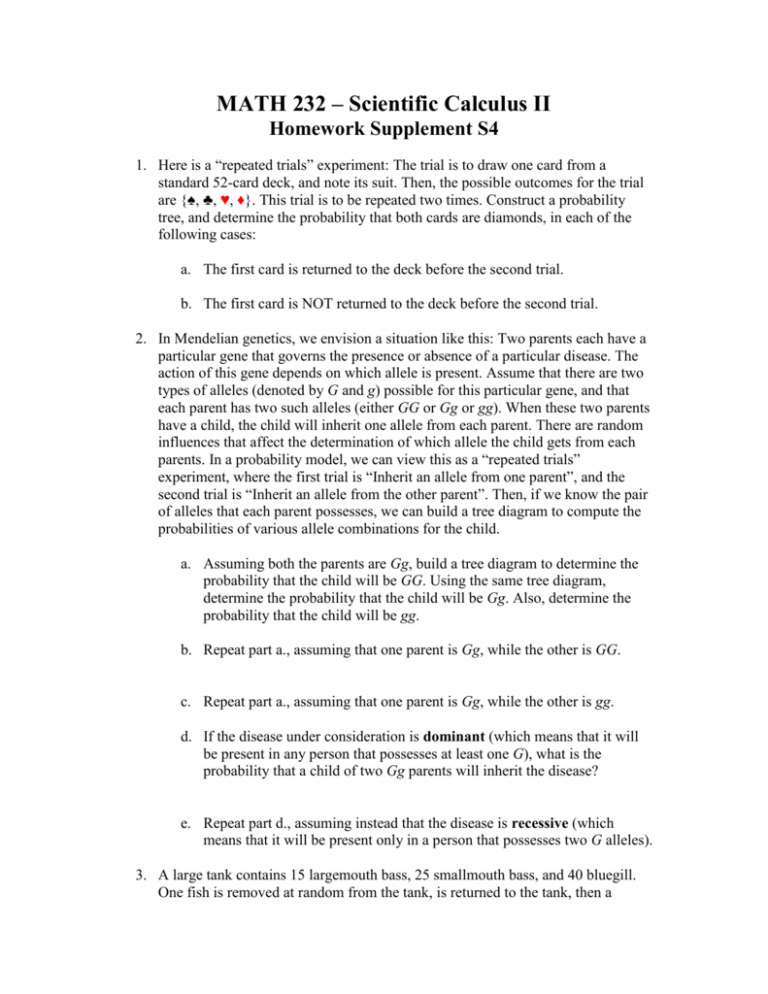
MATH 232 – Scientific Calculus II
Homework Supplement S4
1. Here is a “repeated trials” experiment: The trial is to draw one card from a
standard 52-card deck, and note its suit. Then, the possible outcomes for the trial
are {♠, ♣, ♥, ♦}. This trial is to be repeated two times. Construct a probability
tree, and determine the probability that both cards are diamonds, in each of the
following cases:
a. The first card is returned to the deck before the second trial.
b. The first card is NOT returned to the deck before the second trial.
2. In Mendelian genetics, we envision a situation like this: Two parents each have a
particular gene that governs the presence or absence of a particular disease. The
action of this gene depends on which allele is present. Assume that there are two
types of alleles (denoted by G and g) possible for this particular gene, and that
each parent has two such alleles (either GG or Gg or gg). When these two parents
have a child, the child will inherit one allele from each parent. There are random
influences that affect the determination of which allele the child gets from each
parents. In a probability model, we can view this as a “repeated trials”
experiment, where the first trial is “Inherit an allele from one parent”, and the
second trial is “Inherit an allele from the other parent”. Then, if we know the pair
of alleles that each parent possesses, we can build a tree diagram to compute the
probabilities of various allele combinations for the child.
a. Assuming both the parents are Gg, build a tree diagram to determine the
probability that the child will be GG. Using the same tree diagram,
determine the probability that the child will be Gg. Also, determine the
probability that the child will be gg.
b. Repeat part a., assuming that one parent is Gg, while the other is GG.
c. Repeat part a., assuming that one parent is Gg, while the other is gg.
d. If the disease under consideration is dominant (which means that it will
be present in any person that possesses at least one G), what is the
probability that a child of two Gg parents will inherit the disease?
e. Repeat part d., assuming instead that the disease is recessive (which
means that it will be present only in a person that possesses two G alleles).
3. A large tank contains 15 largemouth bass, 25 smallmouth bass, and 40 bluegill.
One fish is removed at random from the tank, is returned to the tank, then a
second fish is removed at random. Construct a probability tree for this
experiment, and compute the probabilities below:
a. The probability that both fish are the same species.
b. The probability that both fish are bass.
4. Repeat Exercise 3, but with the assumption that the first fish is NOT returned to
the tank before the second one is removed.
5. (Empirical Probabilities) In the accompanying Excel file, you will find some
survival data gathered from a herd of 608 Dall Mountain sheep in Denali National
Park, Alaska. (The first two columns of the Excel table comprise the data set. The
last two columns are calculations done from the data.) In the absence of a better
idea, it is common in science to make the (rather big) assumption that this is a
“typical” sheep population, and that this survival data would be reasonably
accurate for other herds. Under this assumption, the last column (“Fraction that
die within the age interval”) can be interpreted as “Probability that die within the
age interval”. Such probabilities are called empirical probabilities. (For
example, the empirical probability that a randomly-chosen sheep will die between
the ages of 8 and 10 is 0.1316 + 0.1875 = 0.3191.) Under this assumption, and
using the given data, determine the following:
a. What is the probability that a randomly-chosen sheep will die between the
ages of 4 and 5?
b. What is the probability that a randomly-chosen sheep will die before age
10?
c. (Challenge) If we know that a particular sheep has lived to age 4, what is
the probability that this sheep will die before age 5? (HINT: The fact that
the sheep lived to age 4 eliminates 0, 1, 2, 3, and 4 as possible outcomes
for the “age at death” experiment. So, re-compute the empirical
probabilities.)
A Dall Mountain sheep, who is clearly distressed as he stares at a data table concerning the deaths of
608 of his fellow sheep.
6. Challenge Exercise: When rolling two six-sided dice, there are 36 possible
outcomes. The sum of the dots on the rolled dice can be any whole number from 2
to 12. See if you can figure out the probability of each sum in the table below.
Briefly explain how you did it.
Sum of Dots
2
3
4
5
6
7
8
9
10
11
12
Probability
7. (Speaking of Random things!) Do you remember Pascal’s Triangle? If not, look it
up until you DO remember. Then, write the first five rows of Pascal’s Triangle.



